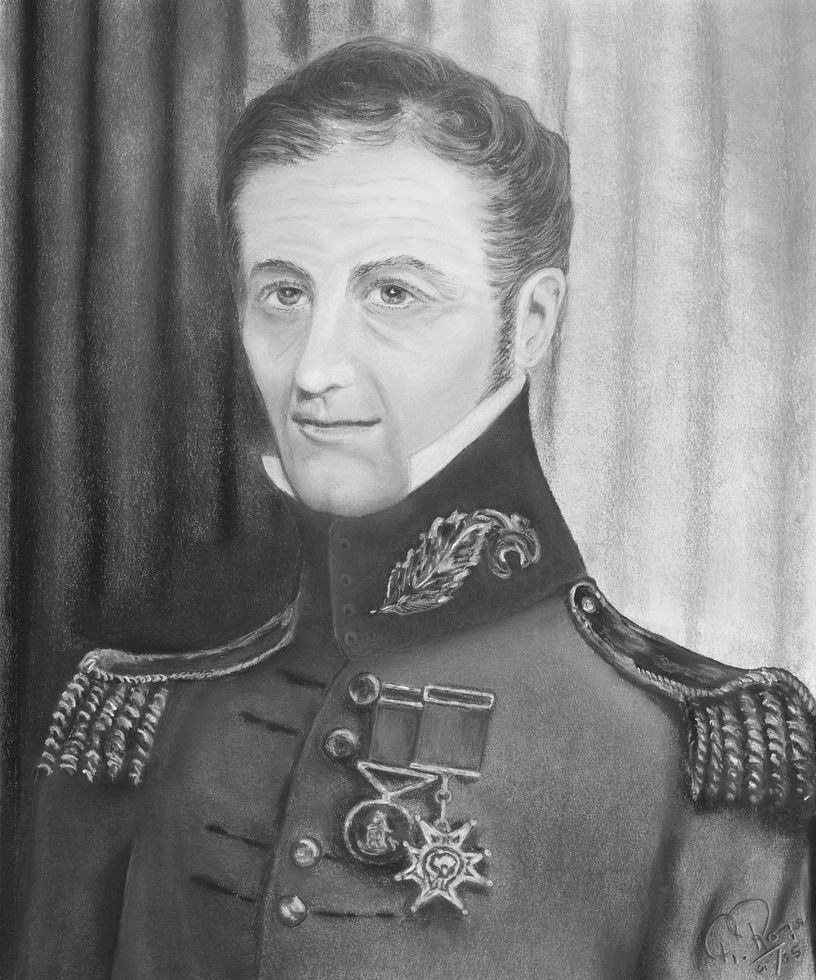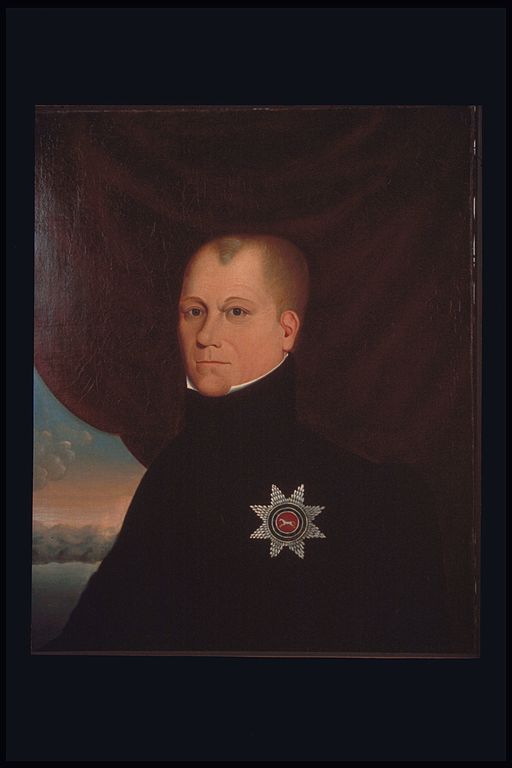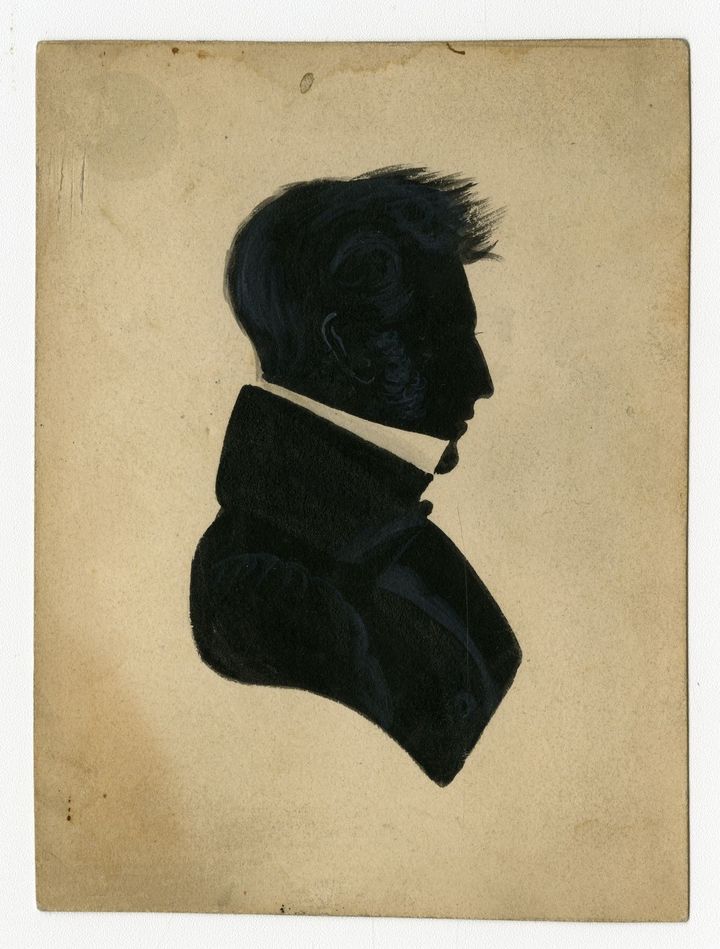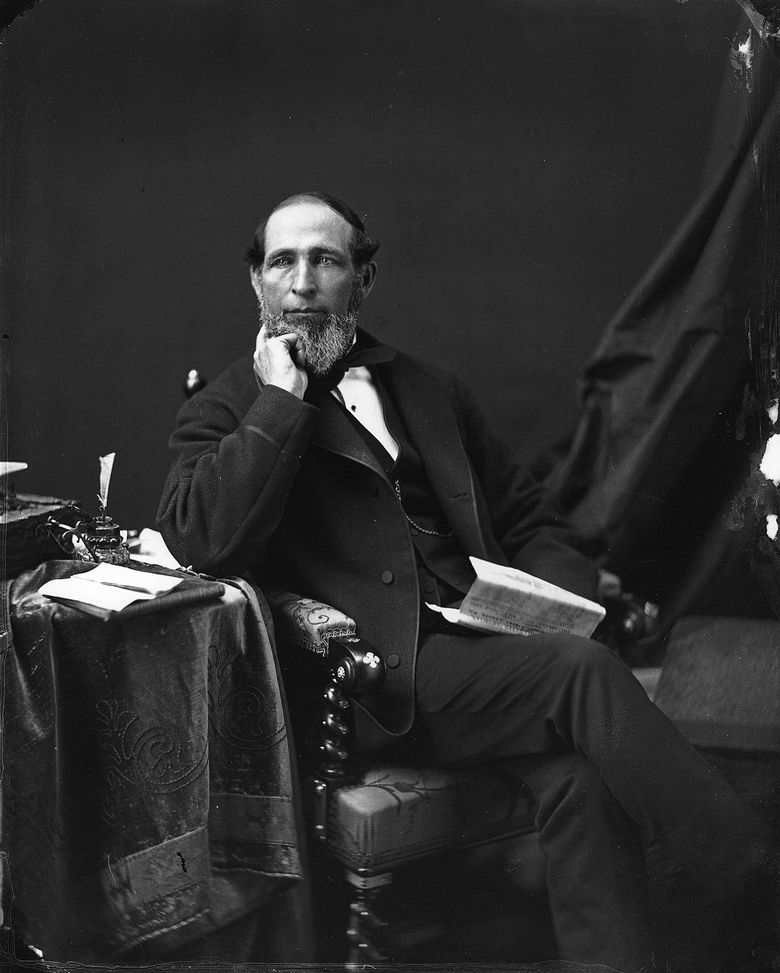Heriot’s Residence, Comfort Hall
When Heriot first arrived in June 1815, he stayed at Lord’s Inn. The inn had been built in 1793, and was located on the north shore of the St. Francis River at the site which later came to be known as Lord’s Rapids. It was from here that he supervised the construction of the barracks and eventually the building of his own home, on a 600-acre plot of land he had been granted at the mouth of the Prevost River (today, the Saint-Germain River). These parcels of land had first belonged to William Grant in 1800 and then to his heir, John Richardson, from 1805. However, it was Simon Stevens, a pioneer from Vermont, who had cleared them—probably illegally—and who had lived on them from 1801 to 1805.
It was in this pastoral setting, on land that had already been cleared, that Heriot built his residence in 1815. He called it Comfort Hall. The home was made of wood and stood on a slight incline, offering him a panoramic view of the racing waters of the St. Francis River and the burgeoning village on the river’s shores. The following year, taking advantage of the water power of the Prevost River, Heriot added a sawmill and a grist mill to his property.
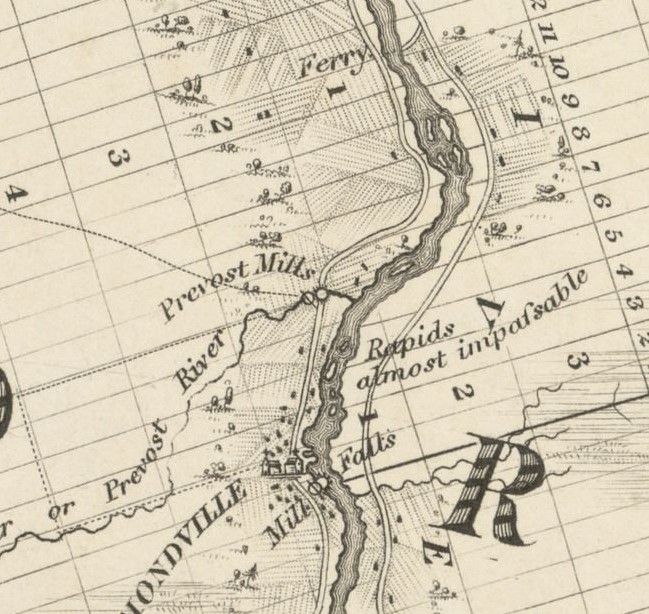
Topographical map of the districts of Quebec, Trois-Rivières, Saint-François, and Gaspé, by Joseph Bouchette, 1831.
Heriot was well known for his hospitality, despite having never married or had children. He welcomed many notable people to his home, regardless of whether they shared the same religious affiliation. He hosted the first missionaries to the region, including the Catholic bishop, Monseigneur Plessis, who toured the Eastern Townships in 1824. In 1829. Heriot welcomed the Governor General of Upper and Lower Canada, James Kempt, to his home, and later invited his cousin, Robert Nugent Watts, to live with him after Watts was elected Member of Parliament for the Drummond-Arthabaska riding in 1841.
By the time Heriot sold his residence and the surrounding grounds to Robert Nugent Watts in December 1842, his health had been declining for a while. Heriot had acquired almost 12,000 acres by 1838. He designated his cousin as his main heir when he made out his will on May 5, 1843, in the presence of notaries Cressé and Lecomte of Nicolet. Watts inherited a good deal of land in Grantham Township, a few islands in the St. Francis, various moveable assets, and some livestock. Others who had been close to Heriot, such as his cousin Robert Heriot, George Leonard Marler, Heriot’s Warrant Officer during the Rebellions of 1837–1838, and John Beck Lindsay, who had been like an adoptive son to him, were also set to inherit various shares, assets, and parcels of land.
After Heriot’s death from typhoid fever at his home on December 30, 1843, an inventory of his assets was taken on April 11, 1844, by Robert James Millar. The inventory suggested that although Heriot had acquired a lot of land during his lifetime, he had not necessarily accumulated wealth in an exaggerated way. The evaluation showed that Heriot owned 38 sheep, 13 cows, 2 bulls, 2 horses, 1 pair of eyeglasses, and some military medals. He was also the creditor of loans amounting to about £529, although he himself was indebted to five people, including Watts and Marler.


